I have embarked on the Level Two Certificate in Coaching Football with FA Learning and Suffolk FA this week, and throughout his time on the course will be sharing his experiences and hopefully encourage others to take their next steps into coaching…
Day Four – 5 April 2012
Now it’s fair to say that the Level Two course in physically, as well as mentally, demanding, and Thursday was probably the most tiring of all so far.
We’d touched on a couple of early points in the classroom at Suffolk One, but were quickly out on the pitch to begin a long day of sessions as each of the 18 candidates had their first chance to actually coach. Keith (tutor) looked on to assess the organisation, communication and understanding of the technical aspects of the relevant topics, which he gave us all yesterday.
Mine was ‘Create Space as a Unit’, so having knocked up the session plan – admittedly with a bit of help from the excellent FA Learning resource ‘The Future Game’ (grassroots edition) – I was ready to step up to the plate. Fortunately I wasn’t up first, no one wants that slot – but someone had to do it, so Patrick (who, coincidentally, I have played against for my club) did well with his opener.


So what is the difference? Well, the technique is about how to do the drill, so in a passing drill, for example, you might talk about head position, standing foot, striking foot and connection with the ball.
After setting up a 20×20 box with four goals, or gates, for my session I brought in 12 players, four in orange bibs, four red and four blue. I wanted them to pass the ball around the area in their team, looking to pass the ball through the gates to score a goal. My first focus was on getting the players to make the area as big as possible and employ the basic attacking principles by spreading themselves long and wide, a diamond formation.
Occasionally one of the players would drop into the middle to pick up a pass from a corner, and although it isn’t wrong to want the ball, the point of the session was to create space, so it gave me the chance to step in and coach. Coming out of the middle and going ‘long’ would not only allow a long pass into space, it would potentially encourage the player on the ball to run with it into the space, keeping possession of the ball. Consequently, positions would then open in the wide areas. So from only one tight pass available for the man with the ball, a slightly different position taken up by the player who was in the middle enabled four options to present themselves.
The progression was into the skill part of the drill, which Keith describes as the ‘when and where’ as opposition is introduced and forces players to decide when to employ the technique. I kept the same set-up, but made one of the three teams defenders. Among other things, I was looking at the way players received the ball, with their first touch taking them away from a defender and into the space. But they also needed the support runs with other players ensuring there was no defender between themselves and the man with the ball.
Paul, a likeable soul who is the group’s 19th-man – he started the course with Lancashire FA but was unable to see out the initial six-days, so is catching up in Suffolk following a recent move south – made the very error I was looking out for. So I was able to stop the drill, go in and follow the coaching principles taught at Level Two: Observe, see fault, coach and correct, recreate and play.
It felt good, it felt enjoyable and I felt comfortable in that situation. But time was running out, 15 minutes means 15 minutes, so I wrapped up, debriefing the group, and checked my stopwatch – 15:46.
Then it was my judgement from Keith. He pulled me to one side to go through my evaluation and on the 21 outcomes from the session, he’d marked me with 20 ticks. “I’m going to be finicky with you,” he said, however. “How did the progression go?” While I thought it was OK, it did seem a bit crowded at times, which I told him. “So how could you make it less busy in the session?” he asked. I suggested either making the pitch bigger, or the favoured option of taking a ball out and going 8v4. On that aspect he gave me an AP – Action Point – and then also mentioned my time-keeping during the session (I perhaps over-ran with the technique part) – which definitely won’t surprise the rest of The FA’s Communications Department – but overall I was delighted with such a positive evaluation.
As I walked over to join in with the other Jamie’s session, Keith said: “Let’s see how you can build on Saturday.” That’s when we do the game-related drill, which progresses the skill drill into a 4v4 game scenario. We’re not doing the same topic, but Keith was “feeling in a charitable mood” before we departed Ipswich at the end of the afternoon and told us what we’ll each be focusing on this Saturday.
“Jamie Bradbury – Pressing,” he called out. What is definitely pressing, though, is a bit of sleep. Tomorrow we’ve got heading (defending and attacking) and finishing. That’s what I call a good Friday…
Level Two Diary
Day One
Day Two
Day Three
If you are keen to get into coaching, whether that’s at Level Two, or any other of the courses on offer, click here to find out about local courses or here for the national course information. There is also a host of online courses available via The FA Learing website.



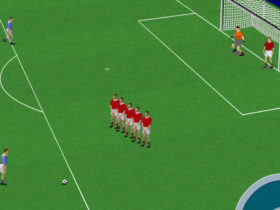








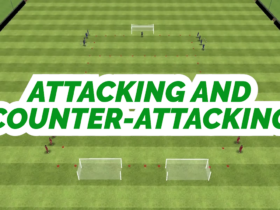


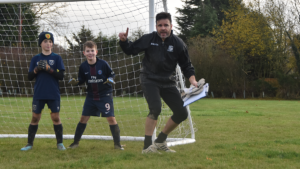
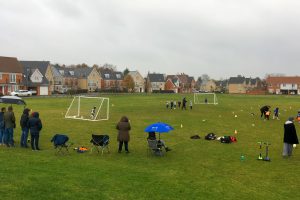
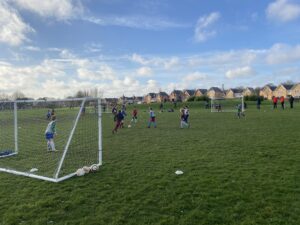
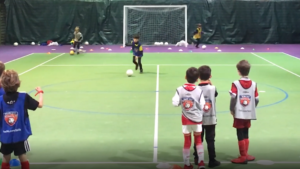


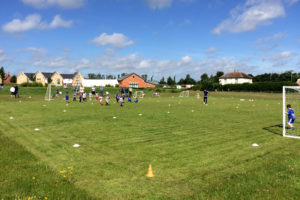

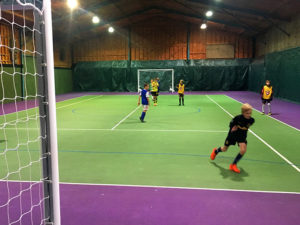
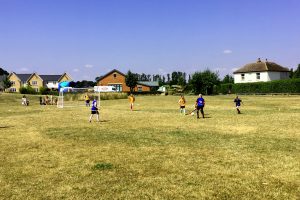
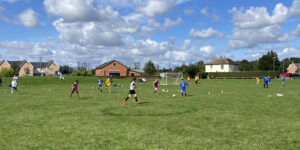






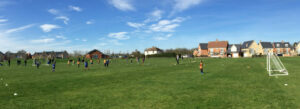



Leave a Reply